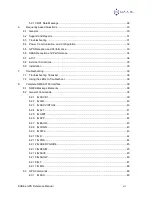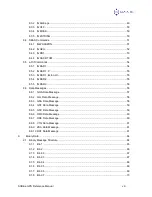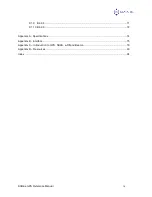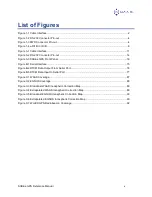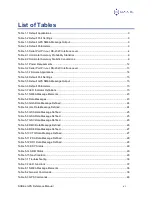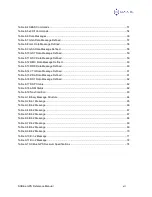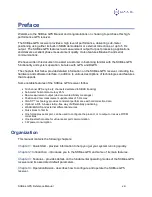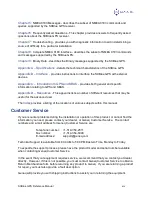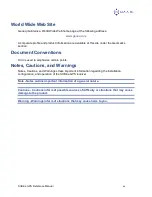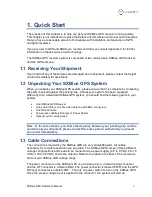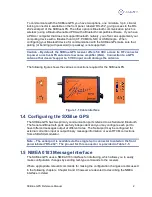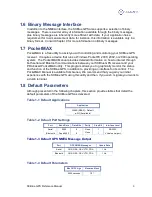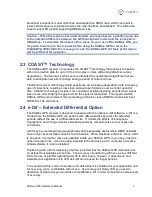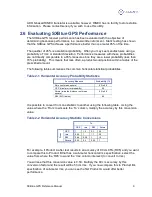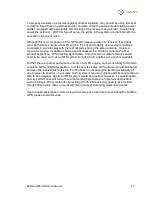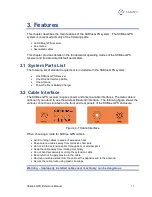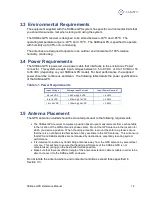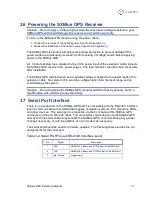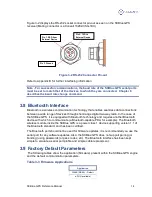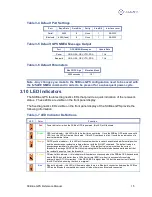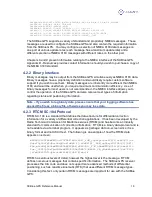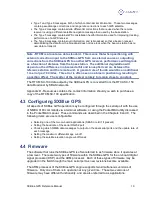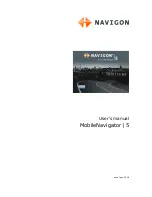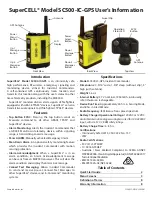
SXBlue GPS Reference Manual
6
amount of tolerable performance drift. Section 2.3 provides with a description of the Coast
technology.
The estimated positioning precision is accessible through the use of our PocketMAX utility
discussed in the PocketMAX Manual and NMEA 0183 command responses as described in
Chapter 6 (The GST NMEA data message). As the receiver is not able to determine
accuracy with respect to a known location in real time (this is traditionally performed in post-
mission analysis), the precision numbers are relative in nature and are approximates.
2.1.3 Update Rates
The update rate of each NMEA and binary message of the SXBlue GPS can be set
independently with a maximum that is dependant upon the message type. Some messages
have a 1 Hz maximum, for example, while others are 5 Hz.
Higher update rates are valuable for applications where higher speeds are present (such as
aviation) or more frequent updates are required for manual navigational tasks, such as
Agricultural Guidance.
2.2 SBAS
The following sections describe the general operation and performance monitoring of the
SBAS demodulator within the SXBlue GPS receiver.
2.2.1 Automatic Tracking
The SBAS demodulator featured within the SXBlue GPS will automatically scan and track
the SBAS satellite signals. This automatic tracking allows the user to focus on other
aspects of their application rather than ensuring the receiver is tracking SBAS correctly.
The SBAS demodulator features two-channel tracking that provides an enhanced ability to
maintain acquisition on a SBAS satellite in regions where more than one satellite is in view.
This redundant tracking approach will result in more consistent acquisition of a signal when
in an area where signal blockage of either satellite is possible.
2.2.2 SBAS Performance
The performance of the SBAS receiver is described in terms of a differential LED. SBAS
requires a line of sight to the SBAS satellites in order to acquire the signal.
The BER number indicates the number of unsuccessfully decoded symbols in a moving
window of 2048 symbols. Due to the use of forward error correction algorithms, one symbol
is composed of two bits. The BER value for both SBAS receiver channels is available in the
RD1 NMEA data message described in detail in chapter 8.
A lower BER indicates that data is being successfully decoded with fewer errors, providing
more consistent throughput. The bit error rate has a default, no-lock value of 500 or more.
As the receiver begins to successfully acquire the signal, it will result in a lower bit error rate.
For best operation, this value should be less than 150 and ideally less than 20.
Space-Based Augmentation Systems broadcast an ionospheric map on a periodic basis that
may take up to 5 minutes to receive upon startup. The SXBlue GPS uses the GPS

